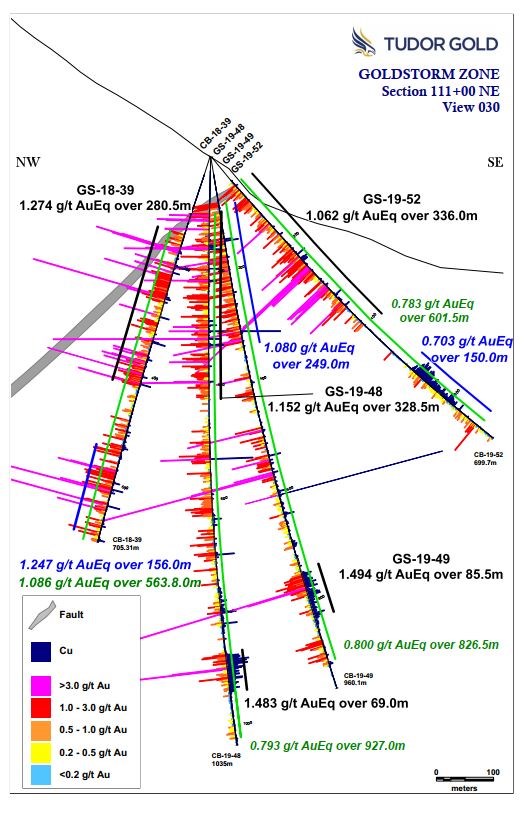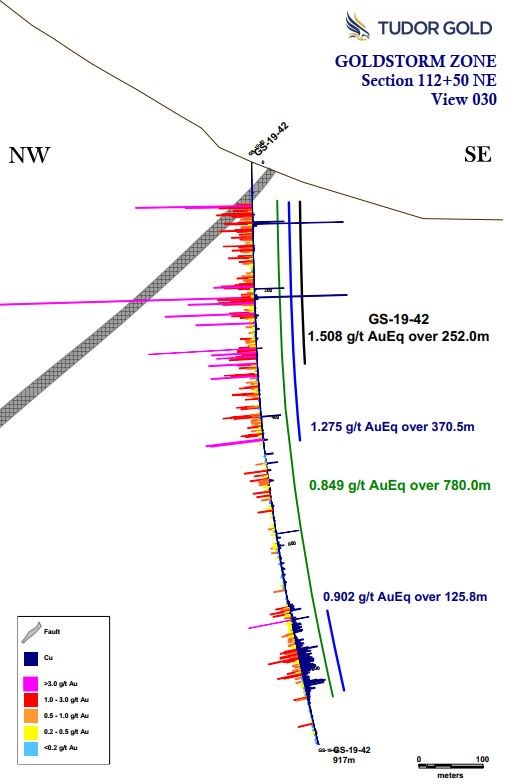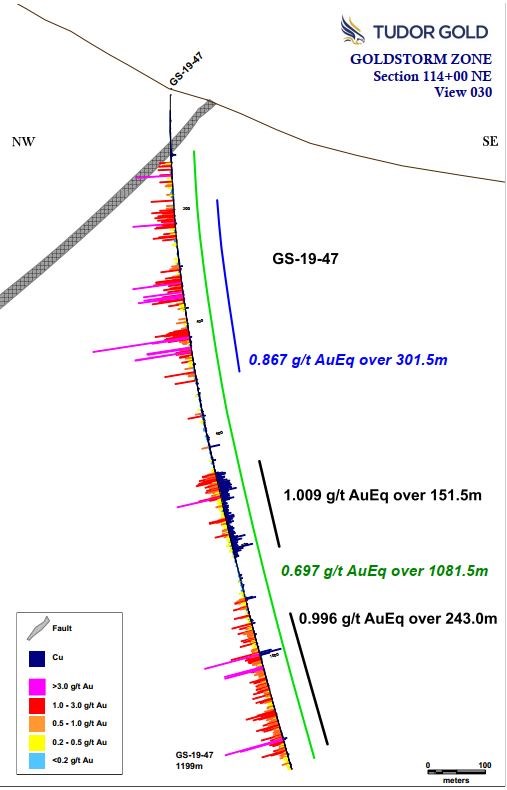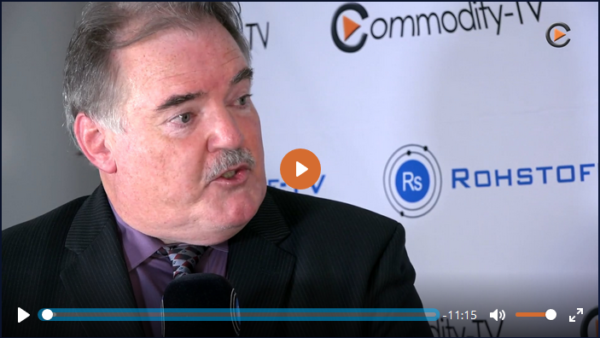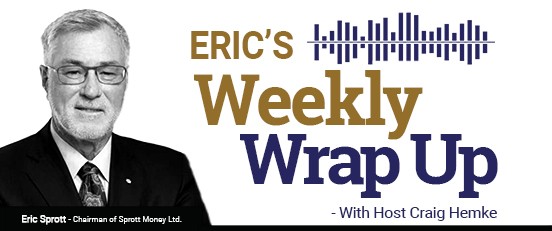

This article is an overview of the economic conditions that will
drive the gold price in 2020 and beyond. The turn of the credit cycle,
the effect on government deficits and how they are to be financed are
addressed.
In the absence of foreign demand for new US Treasuries
and of a rise in the savings rate the US budget deficit can only be
financed by monetary inflation. This is bound to lead to higher bond
yields as the dollar’s falling purchasing power accelerates due to the
sheer quantity of new dollars entering circulation. The relationship
between rising bond yields and the gold price is also discussed.
It
may turn out that the recent extraordinary events on Comex, with the
expansion of open interest failing to suppress the gold price, are an
early recognition in some quarters of the US Government’s debt trap.
The strains leading to a crisis for fiat currencies are emerging into plain sight.

Introduction
In 2019, priced in dollars gold rose 18.3% and silver by 15.1%. Or
rather, and this is the more relevant way of putting it, priced in gold
the dollar fell 15.5% and in silver 13%. This is because the story of
2019, as it will be in 2020, was of the re-emergence of fiat currency
debasement. Particularly in the last quarter, the Fed began aggressively
injecting new money into a surprisingly illiquid banking system through
repurchase agreements, whereby banks’ reserves at the Fed are credited
with cash loaned in return for T-bills and coupon-bearing Treasuries as
collateral. Furthermore, the ECB restarted quantitative easing in
November, and the Bank of Japan stands ready to ease policy further “if
the momentum towards its 2% inflation target comes under threat†(Kuroda
– 26 December).
The Bank of Japan is still buying bonds, but at
a pace which is expected to fall beneath redemptions of its existing
holdings. Therefore, we enter 2020 with money supply being expanded by
two, possibly all three of the major western central banks. Besides
liquidity problems, the central bankers’ nightmare is the threat that
the global economy will slide into recession, though no one will confess
it openly because it would be an admission of policy failure. And
policy makers are also terrified that if bankers get wind of a declining
economy, they will withdraw loan facilities from businesses and make
things much worse.
Of the latter concern central banks have good
cause. A combination of the turn of the credit cycle towards its
regular crisis phase and Trump’s tariff war has already hit
international trade badly, with exporting economies such as Germany
already in recession and important trade indicators, such as the Baltic
dry index collapsing. No doubt, President Trump’s most recent
announcement that a trade deal with China is ready for signing is driven
by an understanding in some quarters of the White House that over trade
policy, Trump is turning out to be the turkey who voted for Christmas.
But we have heard this story several times before: a forthcoming
agreement announced only to be scrapped or suspended at the last moment.
The
subject which will begin to dominate monetary policy in 2020 is who
will fund escalating government deficits. At the moment it is on few
investors’ radar, but it is bound to dawn on markets that a growing
budget deficit in America will be financed almost entirely by monetary
inflation, a funding policy equally adopted in other jurisdictions.
Furthermore, Christine Lagarde, the new ECB president, has stated her
desire for the ECB’s quantitative easing to be extended from government
financing to financing environmental projects as well.
2020 is
shaping up to be the year that all pretence of respect for money’s role
as a store of value is abandoned in favour of using it as a means of
government funding without raising taxes. 2020 will then be the year
when currencies begin to be visibly trashed in the hands of their
long-suffering users.
Gold in the context of distorted markets
At the core of current market distortions is a combination of
interest rate suppression and banking regulation. It is unnecessary to
belabour the point about interest rates, because minimal and even
negative rates have demonstrably failed to stimulate anything other than
asset prices into bubble territory. But there is a woeful lack of
appreciation about the general direction of monetary policy and where it
is headed.
The stated intention is the opposite of reality,
which is not to rescue the economy: while important, from a bureaucrat’s
point of view that is not the greatest priority. It is to ensure that
governments are never short of funds. Inflationary financing guarantees
the government will always be able to spend, and government-licenced
banks exist to ensure the government always has access to credit.
Unbeknown
to the public, the government licences the banks to conduct their
business in a way which for an unlicensed organisation is legally
fraudulent. The banks create credit or through their participation in QE
they facilitate the creation of base money out of thin air which is
added to their reserves. It transfers wealth from unsuspecting members
of the public to the government, crony capitalists, financial
speculators and consumers living beyond their means. The government
conspires with its macroeconomists to supress the evidence of rising
prices by manipulating the inflation statistics. So successful has this
scheme of deception been, that by fuelling GDP, monetary debasement is
presented as economic growth, with very few in financial mainstream
understanding the deceit.
The government monopoly of issuing
money, and through their regulators controlling the expansion of credit,
was bound to lead to progressively greater abuse of monetary trust. And
now, in this last credit cycle, the consumer who is also the producer
has had his income and savings so depleted by continuing monetary
debasement that he can no longer generate the taxes to balance his
government’s books later in the credit cycle.
The problem is not
new. America has not had a budget surplus since 2001. The last credit
cycle in the run up to the Lehman crisis did not deliver a budget
surplus, nor has the current cycle. Instead, following the Lehman crisis
we saw a marked acceleration of monetary inflation, and Figure 2 shows
how dollar fiat money has expanded above its long-term trend since then.

In recent years, the Fed’s attempt to return to monetary normality by
reducing its balance sheet has failed miserably. After a brief pause,
the fiat money quantity has begun to grow at a pace not seen since the
immediate aftermath of the Lehman crisis itself and is back in record
territory. Figure 1 is updated to 1 November, since when FMQ will have
increased even more.
In order to communicate effectively the
background for the relationship between gold and fiat currencies in 2020
it is necessary to put the situation as plainly as possible. We enter
the new decade with the highest levels of monetary ignorance imaginable.
It is a systemic issue of not realising the emperor has no clothes.
Consequently, markets have probably become more distorted than we have
ever seen in the recorded history of money and credit, as widespread
negative interest rates and negative-yielding bonds attest. In our
attempt to divine the future, it leaves us with two problems: assessing
when the tension between wishful thinking in financial markets and
market reality will crash the system, and the degree of chaos that will
ensue.
The timing is impossible to predict with certainty
because we cannot know the future. But, if the characteristics of past
credit cycles are a guide, it will be marked with a financial and
systemic crisis in one or more large banks. Liquidity strains suggest
that event is close, even within months and possibly weeks. If so, banks
will be bailed, of that we can be certain. It will require central
banks to create yet more money, additional to that required to finance
escalating government budget deficits. Monetary chaos promises to be
greater than anything seen heretofore, and it will engulf all western
welfare-dependent economies and those that trade with them.
We
have established that between keeping governments financed, bailing out
banks and perhaps investing in renewable green energy, the issuance of
new money in 2020 will in all probability be unprecedented, greater than
anything seen so far. It will lead to a feature of the crisis, which
may have already started, and that is an increase in borrowing costs
forced by markets onto central banks and their governments. The yield on
10-year US Treasuries is already on the rise, as shown in Figure 3.

Assuming no significant increase in the rate of savings and
despite all attempts to suppress the evidence, the acceleration in the
rate of monetary inflation will eventually lead to runaway increases in
the general level of prices measured in dollars. As Milton Friedman put
it, inflation [of prices] is always and everywhere a monetary
phenomenon.
Through QE, central banks believe they can contain
the cost of government funding by setting rates. What they do not seem
to realise is that while to a borrower interest is a cost to set against
income, to a lender it reflects time-preference, which is the
difference between current possession, in this case of cash dollars, and
possession at a future date. Unless and until the Fed realises and
addresses the time preference problem, the dollar will lose purchasing
power. Not only will it be sold in the foreign exchanges, but depositors
will move to minimise their balances and creditors their ownership of
debt.
If, as it appears in Figure 3, dollar bond yields are
beginning a rising trend, the inexorable pull of time preference is
already beginning to apply and further rises in bond yields will imperil
government financing. The Congressional Budget Office assumes the
average interest rate on debt held by the public will be 2.5% for the
next three years, and that net interest in fiscal 2020 will be $390bn,
being about 38% of the projected deficit of $1,008bn. Combining the
additional consequences for government finances of a recession with
higher bond yields than the CBO expects will be disastrous.
Clearly,
in these circumstances the Fed will do everything in its power to stop
markets setting the cost of government borrowing. But we have been here
before. The similarities between the situation for the dollar today and
the deterioration of British government finances in the early to
mid-1970s are remarkable. They resulted in multiple funding crises and
an eventual bail-out from the IMF. Except today there can be no IMF
bail-out for the US and the dollar, because the bailor gets its currency
from the bailee.
Nearly fifty years ago, in the UK gold rose
from under £15 per ounce in 1970 to £80 in December 1974. The peak of
the credit cycle was at the end of 1971, when the 10-year gilt yield to
maturity was 7%. By December 1974, the stock market had crashed, a
banking crisis had followed, price inflation was well into double
figures and the 10-year gilt yield to maturity had risen to over 16%.
History
rhymes, as they say. But for historians the parallels between the
outlook for the dollar and US Treasury funding costs at the beginning of
2020, and what transpired for the British economy following the Barbour
boom of 1970-71 are too close to ignore. It is the same background for
the relationship between gold and fiat currencies for 2020 and the few
years that follow.
Gold and rising interest rates
Received investment wisdom is that rising interest rates are bad for
the gold price, because gold has no yield. Yet experience repeatedly
contradicts it. Anyone who remembers investing in UK gilts at a 7% yield
in December 1971 only to see prices collapse to a yield of over 16%,
while gold rose from under £15 to £80 to the ounce over the three years
following should attest otherwise.
Part of the error is to
believe that gold has no yield. This is only true of gold held as cash
and for non-monetary usage. As money, it is loaned and borrowed, just
like any other form of money. Monetary gold has its own time preference,
as do government currencies. In the absence of state intervention, time
preferences for gold and government currencies are set by their
respective users, bearing in mind the characteristics special to each.
It is not a subject for simple arbitrage, selling gold and buying
government money to gain the interest differential, because the spread
reflects important differences which cannot be ignored. It is like
shorting Swiss francs and buying dollars in the belief there is no
currency risk.
The principal variable between the time
preferences of gold and a government currency is the difference between
an established form of money derived from the collective preferences of
its users, for which there is no issuer risk, and state-issued currency
which becomes an instrument of funding by means of its debasement.
The
time preference of gold will obviously vary depending on lending risk,
which is in addition to an originary rate, but it is considerably more
stable than the time preference of a fiat currency. Gold’s interest rate
stability is illustrated in Figure 4, which covers the period of the
gold standard from the Bank Charter Act of 1844 to before the First
World War, during which time the gold standard was properly implemented.
With the exception of uncontrolled bank credit, sterling operated as a
gold substitute.

Admittedly, due to problems created by the cycle of bank credit,
these year-end values conceal some significant fluctuations, such as at
the time of the Overend Gurney collapse in 1866 when borrowing rates
spiked to 10%. The depression following the Barings crisis of 1890
stalled credit demand which is evident from the chart. However,
wholesale borrowing rates, which were effectively the cost of borrowing
in gold, were otherwise remarkably stable, varying between 2-3½%. Some
of this variation can be ascribed to changing perceptions of general
borrower risk and some to changes in industrial investment demand,
related to the cycle of bank credit.
Compare this with dollar
interest rates since 1971, when the dollar had suspended the remaining
fig-leaf of gold backing, which is shown in Figure 5 for the decade
following.

In February 1972 the Fed Funds rate was 3.29%, rising eventually
to over 19% in January 1981. At the same time gold rose from $46 to a
high of $843 at the morning fix on 21 January 1980. Taking gold’s
originary interest rate as approximately 2% it required a 17% interest
rate penalty to dissuade people from hoarding gold and to hold onto
dollars instead.
In 1971, US Government debt stood at 35% of GDP
and in 1981 it stood at 31%. The US Government ran a budget surplus over
the decade sufficient to absorb the rising interest cost on its T-bill
obligations and any new Treasury funding. America enters 2020 with a
debt to GDP ratio of over 100%. Higher interest rates are therefore not a
policy option and the US Government, and the dollar, are ensnared in a
debt trap from which the dollar is unlikely to recover.
The seeds
of the dollar’s destruction were sown over fifty years ago, when the
London gold pool was formed, whereby central banks committed to help the
US maintain the price at $35, being forced to do so because the US
could no longer supress the gold price on its own. And with good reason:
Figure 6 shows how the last fifty years have eroded the purchasing
power of the four major currencies since the gold pool failed.

Over the last fifty years, the yen has lost over 92%, the
dollar 97.6%, the euro (and its earlier components 98.2% and sterling
the most at 98.7%. And now we are about to embark on the greatest
increase of global monetary inflation ever seen.
The market for physical gold
In recent years, demand for physical gold has been strong. Chinese
and Indian private sector buyers have to date respectively accumulated
an estimated 17,000 tonnes (based on deliveries from Shanghai Gold
Exchange vaults) and about 24,000 tonnes (according to WGC Director
Somasundaram PR quoted in India’s Financial Express last May).
It
is generally thought that higher prices for gold will deter future
demand from these sources, with the vast bulk of it being categorised as
simply jewellery. But this is a western view based on a belief in
objective values for government currencies and subjective prices for
gold. It ignores the fact that for Asians, it is gold that has the
objective value. In Asia gold jewellery is acquired as a store of value
to avoid the depreciation of government currency, hoarded as a central
component of a family’s long-term wealth accumulation.
Therefore,
there is no certainty higher prices will compromise Asian demand.
Indeed, demand has not been undermined in India with the price rising
from R300 to the ounce to over R100,000 today since the London gold pool
failed, and that’s despite all the government disincentives and even
bans from buying gold.
Additionally, since 2008 central banks
have accumulated over 4,400 tonnes to increase their official reserves
to 34,500 tonnes. The central banks most active in the gold market are
Asian, and increasingly the East and Central Europeans.
There
are two threads to this development. First there is a geopolitical
element, with Russia replacing reserve dollars for gold, and China
having deliberately moved to control global physical delivery markets.
And second, there is evidence of concern amongst the Europeans that the
dollar’s role as the reserve currency is either being compromised or no
longer fit for a changed world. Furthermore, the rising power of Asia’s
two hegemons continues to drive over two-thirds of the world’s
population away from the dollar towards gold.
Goldmoney estimates
there are roughly 180,000 tonnes of gold above ground, much of which
cannot be categorised as monetary: monetary not as defined for the
purposes of customs reporting, but in the wider sense to include all
bars, coins and pure gold jewellery accumulated for its long-term wealth
benefits through good and bad times. Annual mine production adds
3,000-3,500 tonnes, giving a stock to flow ratio of over 50 times. Put
another way, the annual increase in the gold quantity is similar to the
growth in the world’s population, imparting great stability as a medium
of exchange.
These qualities stand in contrast to the
increasingly certain acceleration of fiat currency debasement over the
next few years. Anyone prepared to stand back from the financial
coalface can easily see where the relationship between gold and fiat
currencies is going. Most of the world’s population is moving away from
the established fiat regime towards gold as a store of value, their own
fiat currencies lacking sufficient credibility to act as a dollar
alternative. And financial markets immersed in the fiat regime have very
little physical gold in possession. Instead, where it is now perceived
that there is a risk of missing out on a rise in the gold price,
investors have begun accumulating in greater quantities the paper
alternatives to physical gold: ETFs, futures, options, forward contracts
and mining shares.
Paper markets
From the US Government’s point of view, gold as a rival to the dollar
must be quashed, and the primary purpose of futures options and
forwards is to expand artificial supply to keep the price from rising.
In a wider context, the ability to print synthetic commodities out of
thin air is a means of suppressing prices generally and we must not be
distracted by claims that derivatives improve liquidity: they only
improve liquidity at lower prices.
When the dollar price of gold
found a major turning point on 17 December 2015, open interest on Comex
stood at 393,000 contacts. The year-end figure today is nearly double
that at 786,422 contracts, representing an increase of paper supply
equivalent to 1,224 tonnes. But that is not all. Not only are there
other regulated derivative exchanges with gold contracts, but also there
are unregulated over the counter markets. According to the Bank for
International Settlements from end-2015 unregulated OTC contracts
(principally London forward contracts) expanded by the equivalent of
2,450 tonnes by last June, taken at contemporary prices. And we must not
forget the unknown quantity of bank liabilities to customers’
unallocated accounts which probably involve an additional few thousand
tonnes.
In recent months, the paper suppression regime has
stepped up a gear, evidenced by Comex’s open interest rising. This is
illustrated in Figure 7.

There are two notable features in the chart. First, the rising
gold price has seen increasing paper supply, which we would expect from a
market designed to keep a lid on prices. Secondly instead of declining
with the gold price, open interest continued to rise following the price
peak in early September while the gold price declined by about $100.
This tells us that the price suppression scheme has run into trouble,
with large buyers taking the opportunity to increase their positions at
lower prices.
In the past, bullion banks have been able to put a
lid on prices by creating Comex contracts out of thin air. The recent
expansion of open interest has failed to achieve this objective, and it
is worth noting that the quantity of gold in Comex vaults eligible for
delivery and pledged is only 2% of the 2,446-tonne short position. In
London, there are only 3,052 tonnes in LBMA vaults (excluding the Bank
of England), which includes an unknown quantity of ETF and custodial
gold. Physical liquidity for the forward market in London is therefore
likely to be very small relative to forward deliveries. And of course,
the bullion banks in London and elsewhare do not have the metal to cover
their obligations to unallocated account holders, which is an
additional consideration.
Clearly, there is not the gold
available in the system to legitimise derivative paper. It now appears
that paper gold markets could be drifting into systemic difficulties
with bullion banks squeezed by a rising gold price, short positions and
unallocated accounts.
There are mechanisms to counter these
systemic risks, such as the ability to declare force majeure on Comex,
and standard unallocated account contracts which permit a bullion bank
to deliver cash equivalents to bullion obligations. But the triggering
of any such escape from physical gold obligations could exacerbate a
buying panic, driving prices even higher. It leads to the conclusion
that any rescue of the bullion market system is destined to fail.
A two-step future for the gold price
It has been evident for some time that the world of fiat currencies
has been drifting into ever greater difficulties of far greater
magnitude than can be contained by spinning a few thousand tonnes of
gold back and forth on Comex and in London. That appears to be the
lesson to be drawn from the inability of a massive increase in open
interest on Comex to contain a rising gold price.
It will take a
substantial upward shift in the gold price to appraise western financial
markets of this reality. In combination with systemic strains
increasing, a gold price of over $2,000 may do the trick. Professional
investors will have found themselves wrongfooted; underinvested in ETFs,
gold mines and regulated derivatives, in which case their gold demand
is likely to drive one or more bullion houses into considerable
difficulties. We might call this the first step in a two-step monetary
future.
The extent to which gold prices rise could be
substantial, but assuming the immediate crisis itself passes, banks
having been bailed in or out, and QE accelerated in an attempt to put a
lid on government bond yields, then the gold price might be deemed to
have risen too far, and due for a correction. But then there will be the
prospect of an accelerating loss of purchasing power for fiat
currencies as a result of the monetary inflation, and that will drive
the second step as investors realise that what they are seeing is not a
rising gold price but a fiat currency collapse.
The high levels
of government debt today in the three major jurisdictions appear to
almost guarantee this outcome. The amounts involved are so large that
today’s paper gold suppression scheme is likely to be too small in
comparison and cannot stop it happening. The effect on currency
purchasing powers will then be beyond question. Monetary authorities
will be clueless in their response, because they have all bought into a
form of economics that puts what will happen beyond their understanding.
As noted above, the path to a final crisis for fiat currencies
might have already started, with the failure by the establishment to
suppress the gold price through the creation of an extra 100,000 Comex
contracts. If not, then any success by the monetary authorities to
reassert control is likely to be temporary.
Perhaps we are
already beginning to see the fiat currency system beginning to unravel,
in which case those that insist gold is not money will find themselves
impoverished.
Source: Goldmoney Insights
https://www.goldmoney.com/research/goldmoney-insights/gold-s-outlook-for-2020










